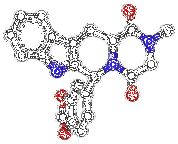Read also the article about the excellent natural product Man Plus Power.
It initially was developed by the biotechnology company ICOS, and then again developed and marketed world-wide as Cialis ® , by Lilly ICOS, LLC, the joint venture of ICOS Corporation and Eli Lilly and Company.
Cialis ® tablets, in 5 mg, 10 mg, and 20 mg doses, are yellow, film-coated, and almond-shaped.
In December 2003, the Food and Drug Administration approved tadalafil (as Cialis ® for sale in the U.S. as the third ED prescription drug pill after sildenafil (Viagra) and vardenafil (Levitra).
In April 2012 Avanafil (Stendra) is available also.
Cialis ® 's 36-hour effectiveness earned it the nickname, "The Weekend Pill"; like sildenafil and vardenafil, tadalafil is recommended as an 'as needed' medication.
Cialis ® is the only one of the three that is also offered as a once daily medication.
Moreover, besides ED, tadalafil for the treatment of pulmonary arterial hypertension is currently under regulatory review in multiple regions.
In late November 2008, Eli Lilly sold the exclusive rights to commercialize tadalafil for pulmonary arterial hypertension in the United States to United Therapeutics for an upfront payment of $150 million.
Tadalafil, sildenafil, and vardenafil all act by inhibiting the PDE5 enzyme. These drugs also inhibit other PDE enzymes.
Sildenafil and vardenafil inhibit PDE6, an enzyme found in the eye, more than tadalafil.
Some sildenafil users see a bluish tinge and have a heightened sensitivity to light because of PDE6 inhibition.
Sildenafil and vardenafil also inhibit PDE1 more than tadalafil.
PDE1 is found in the brain, heart, and vascular smooth muscle.
It is thought that the inhibition of PDE1 by sildenafil and vardenafil leads to vasodilation, flushing, and tachycardia.
Tadalafil inhibits PDE11 more than sildenafil or vardenafil.
PDE11 is expressed in skeletal muscle, the prostate, the liver, the kidney, the pituitary gland, and the testes.
The effects on the body of inhibiting PDE11 are not known.
 How
does Cialis ® (tadalafil) work?
How
does Cialis ® (tadalafil) work? Cialis
® acts in the same way as
Viagra, by blocking an enzyme called phosphodiesterase-5, or PDE-5. This helps the smooth
muscles in the penis relax and widen, which allows for more blood to enter. As a result,
you gain erections faster and easier with Cialis ® .
Cialis
® acts in the same way as
Viagra, by blocking an enzyme called phosphodiesterase-5, or PDE-5. This helps the smooth
muscles in the penis relax and widen, which allows for more blood to enter. As a result,
you gain erections faster and easier with Cialis ® .


